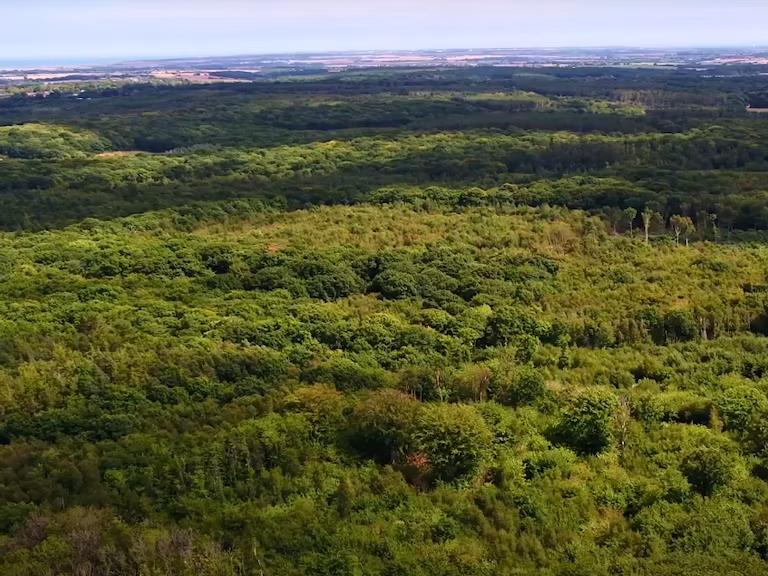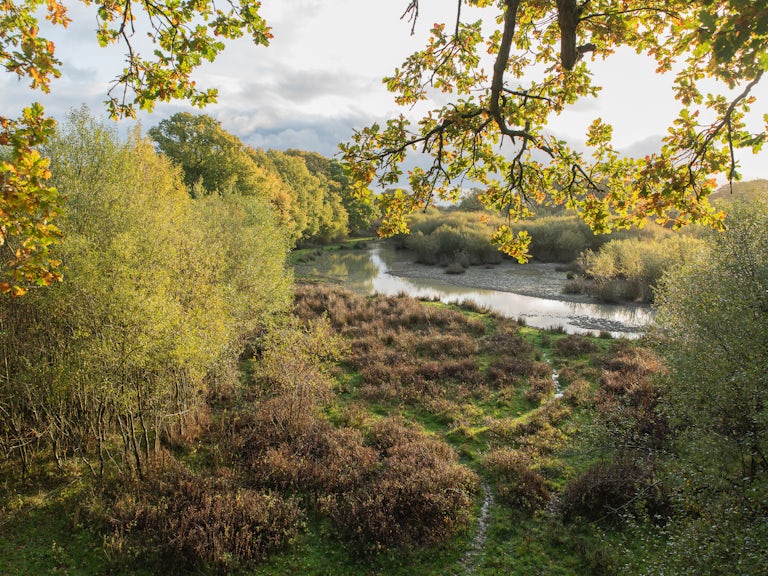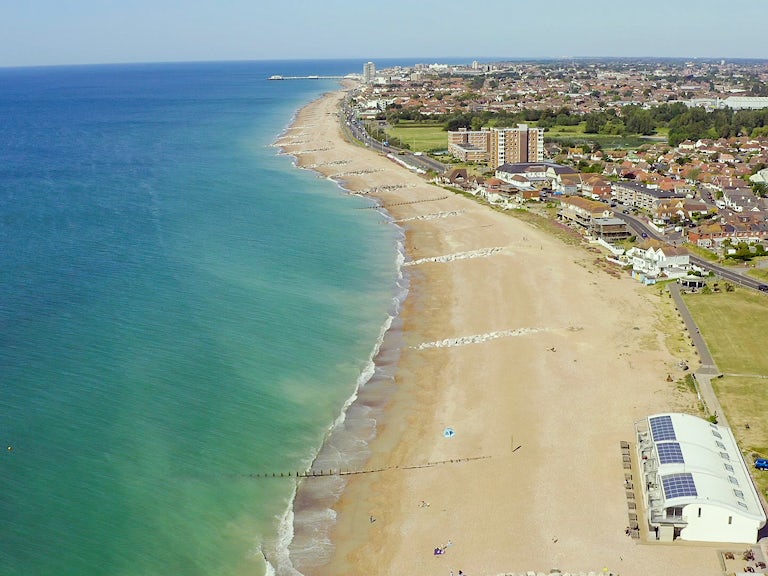One year in: Wilder Blean
The Wilder Blean Initiative was awarded our first ever Rewilding Challenge Fund of £100k back in 2023. One year on we caught up with Kent Wildlife Trust to find out how their grand vision is taking shape.

Published 26/07/2024
It’s been a year since the Wilder Blean Initiative was awarded our first ever Challenge Fund of £100k to support their vision for a wilder Blean landscape. We spoke to Helen Pitman, Wilder Blean Landscape Manager at Kent Wildlife Trust, to see how the last year has been and what lies ahead for the Blean.
Can you sum up the Wilder Blean Initiative for someone who’s new to it?
It’s easiest to think about it in terms of phases. The bison reintroduction project was phase one; introducing ecosystem engineers (bison but also cattle, ponies and pigs), in partnership with the Wildwood Trust, for woodland management and recording the changes in the habitat, ecosystem and other species that live there. The bison project is ongoing, and we’ve already seen such impressive results from having those amazing ecosystem engineers in place in the Blean for two years.
Phase two of the Wilder Blean Initiative is taking our learning from the bison project and rolling them out across different reserves within the Blean landscape; working with other landholders who want to look at land-use changes on their land. So, beginning to move from West Blean across the whole landscape. Phase three is that broader, connectivity piece and thinking even bigger: can we create a wildlife corridor that links all the way to the coast, can we reconnect Kent’s fragmented landscapes for wildlife and people once again?
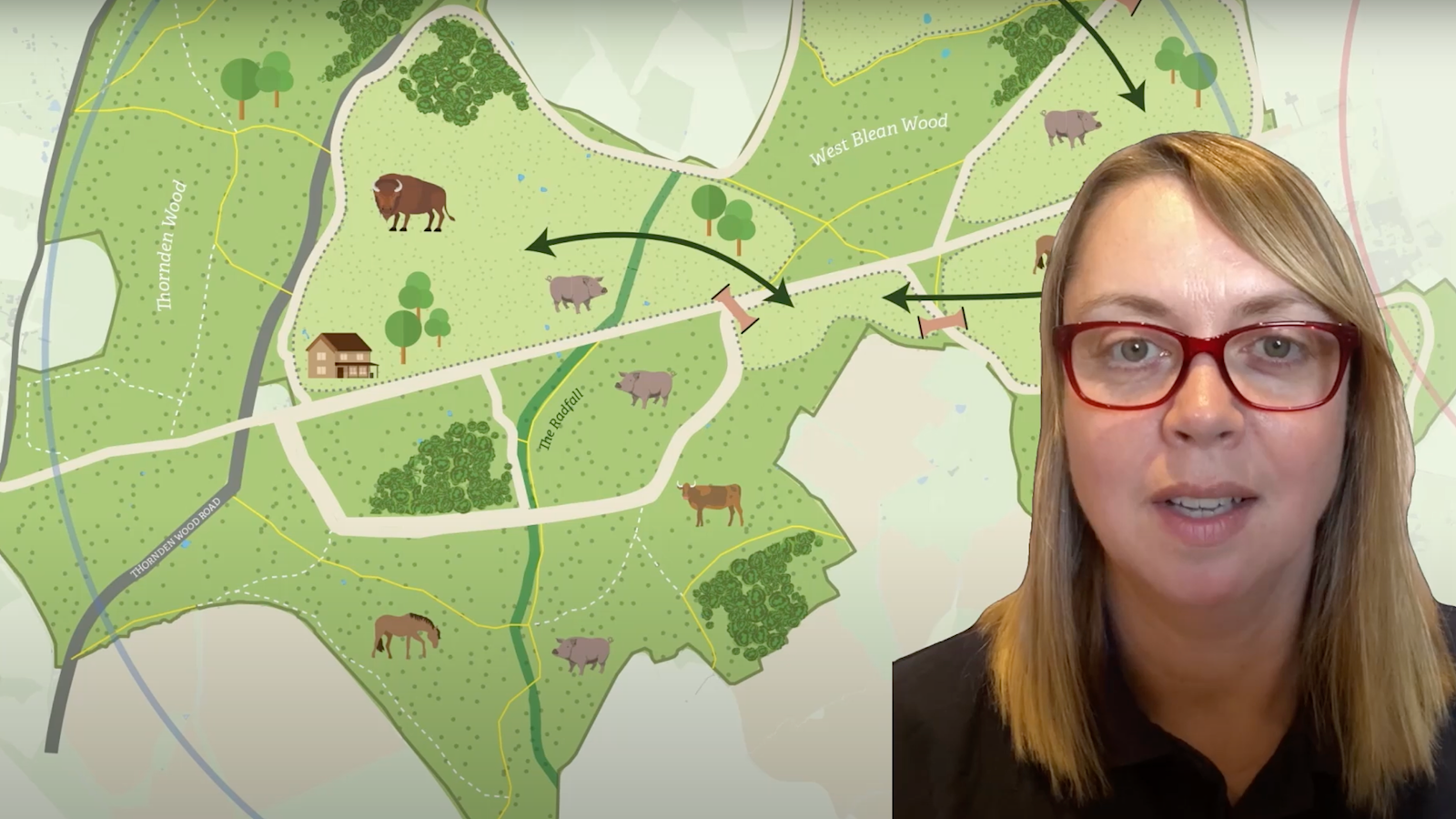
Tell us how the first year has gone
It’s been such an interesting year. When I started this role two years ago, the Wilder Blean Initiative – the partnership project between Kent Wildlife Trust, RSPB and the Woodland Trust – was looking at our reserves and how we could build better connectivity between them. But the last year has taught us, more than ever, that you can’t just end up with more isolated pockets of well-connected habitat. You need to think about the whole, big picture – as Rewilding Britain says, ‘Think Big, Act Wild’!
So that’s what we’ve been focusing on over the last year. Kent is one of the most land-scarce areas in England, we don’t have huge swathes of land in which to rewild. If we can do a successful, landscape-scale conservation here, we can do it anywhere. That’s the exciting thing about it – being able to trial all these different things, work out the best way of doing them, and build this model of a connected, climate resilient, people- and wildlife-friendly landscape and hopefully roll that out across Kent and beyond.

Any particular highlights from the last year?
I think one of the most influential things that’s happened over the last 12 months – funded in part by the Challenge Fund – is our trip to the Netherlands, where we took some key decision-makers (including from Natural England and the Department of Transport) to see what rewilding milestones they’ve achieved there. It’s a comparable landscape to Kent that has similar barriers to rewilding; it has a high population density with lots of cities, roads and infrastructure. And yet they’re much further ahead than us in terms of defragmenting the landscape, which was a real eye-opener for those decision-makers on the trip.
In 2005, the Dutch government commissioned a multiyear programme to address the issue of fragmentation by installing structures such as ecoducts, ecoculverts, wildlife crossings and banks along existing infrastructure that allow multiple different groups of species to more easily move across the landscape. Some of the bridges, which can be over 100m wide, have been built as wetland habitats to enable movement of threatened amphibian populations. They also allow animals the size of Blean bison to establish landscape-level grazing functionality. By 2018, 72% of the 176 bottlenecks identified had been removed through the installation of over 500 of wildlife crossings and structures.
Being able to show these key decision-makers what the Netherlands have achieved – and how – has been a real game-changer. It also helped bring home the urgency of all this. The UK is one of the most nature-depleted countries in the world, we don’t have a lot of time to waste. We should be learning from places that have achieved what we want to achieve.
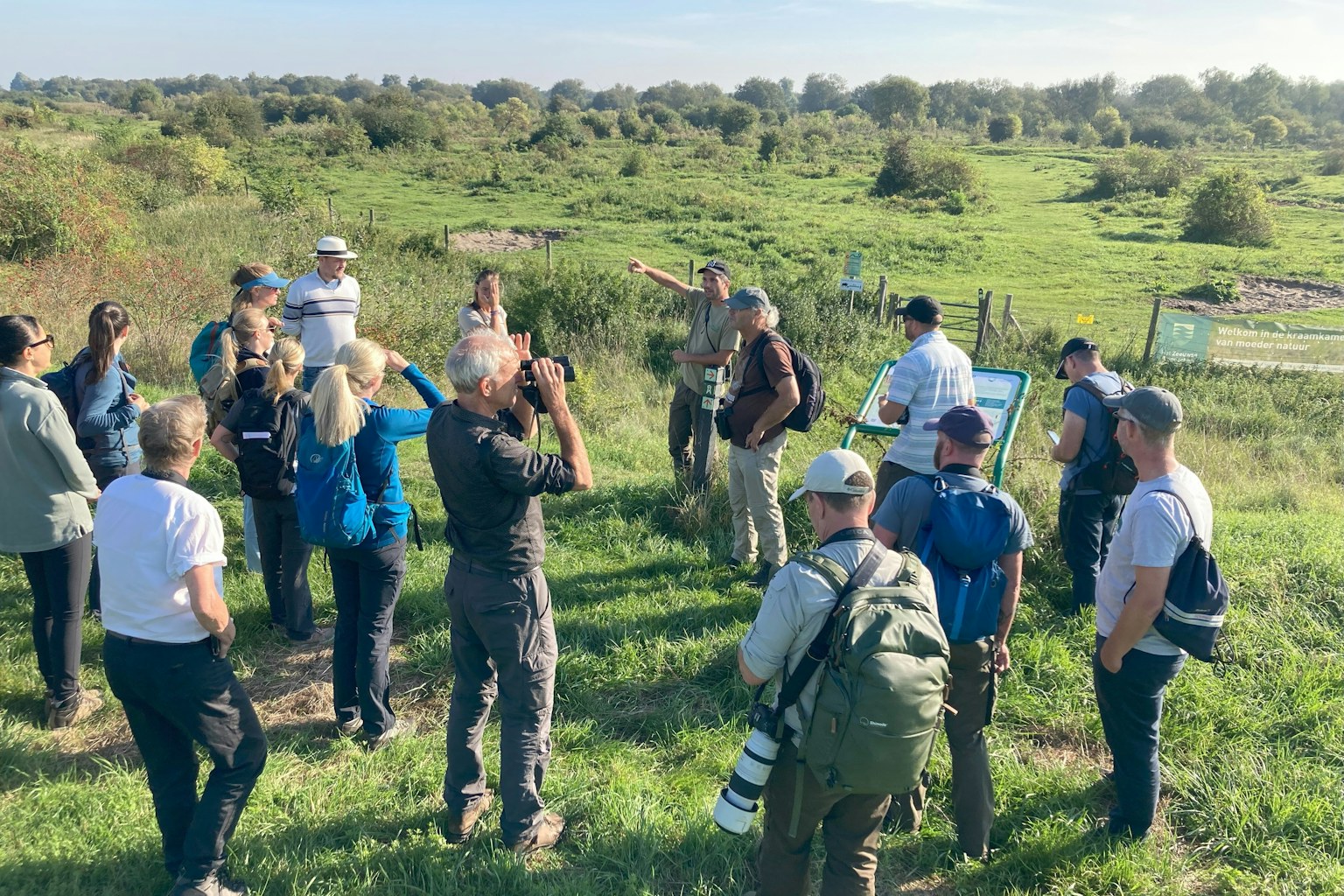
What do you envisage the next 12 months will look like?
Over the last year, our data scientists have been exploring different mapping opportunities – ecologically but also socially. Defragmenting the landscape at the Blean and beyond won’t just benefit wildlife; people are also suffering from living in a fragmented landscape and not being able to easily access wild spaces, such as the Blean. Using that data, we’re going to be putting on a workshop looking at the beginning of a defragmentation strategy for the Blean.
Over the next year, we’re going to take all our learnings and start working up a defragmentation strategy for the Blean – identifying what the barriers, opportunities and challenges are and how we can build a more connected landscape by working with lots of different landholders.
Thanks to the Challenge Fund, we’ve been able to hire a Community Organiser who’s been working to pull together all the fragmented communities within and around the Blean to create a Community Advisory Group, which will be so important in helping develop the community and wellbeing aspect of the Wilder Blean vision. We’re going to hand it over to them and ask: ‘what is it that you want to see happen across the Blean?’ We’ve had one event already; we’ve got a webinar coming up, then we’re going to have a strategy workshop in September where people can come along and tell us what they think. There’s a lot going on!
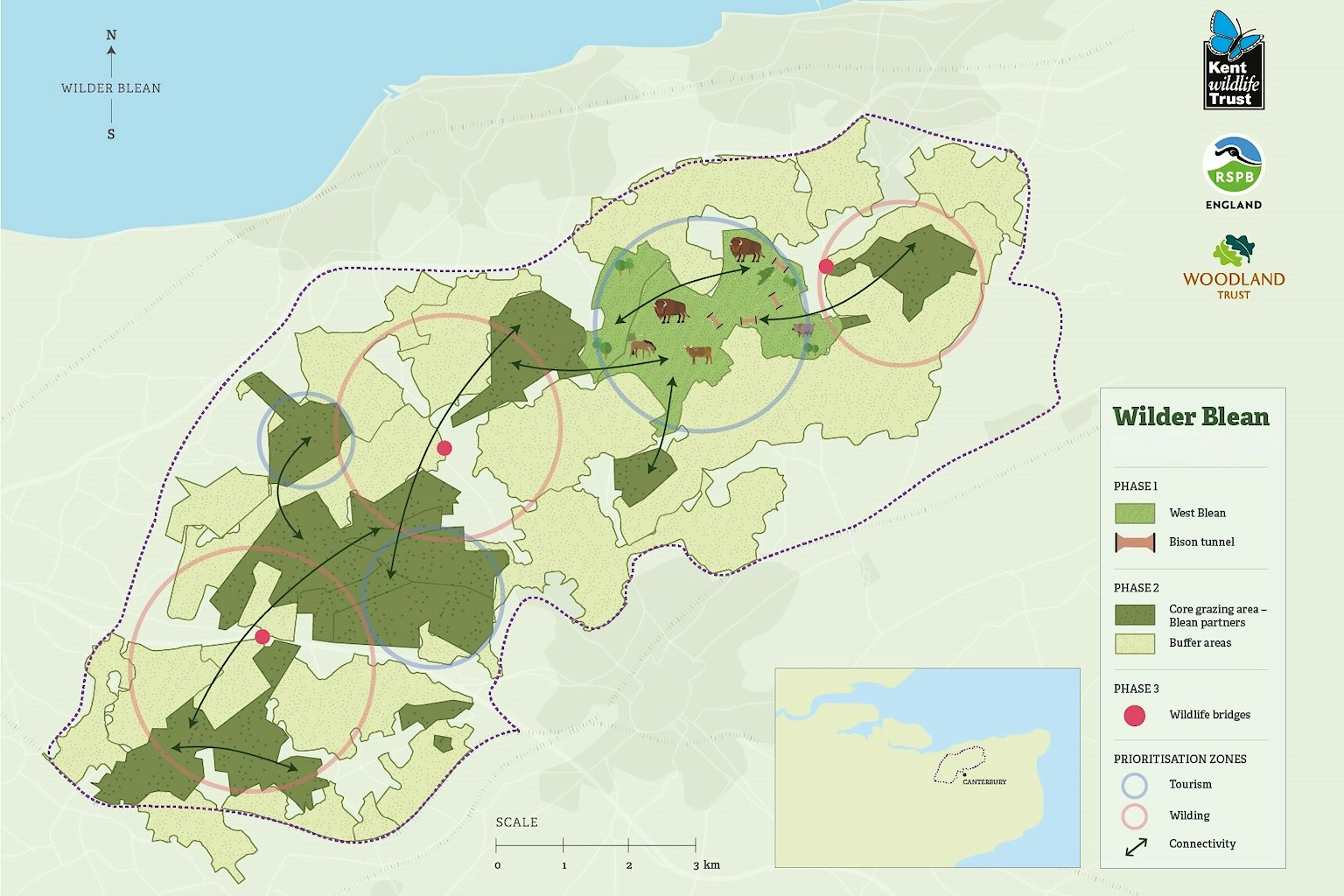
What would you say to someone thinking of applying for the Challenge Fund?
I would say – absolutely go for it! It’s such a unique pot of funding that you very, very rarely get when you’re trying to develop projects like this. Lots of funders want you to have a product that they can fund – but the Challenge Fund grant is enabling us to build that product. Our product is a vision, a 25-year vision for the Blean. The Challenge Fund has enabled us to give it a go and grow, morph and change, which is fairly unique in the funding world – I haven’t come across a grant like this before. I would say anyone who’s wanting to develop a strong, robust programme should really consider it.
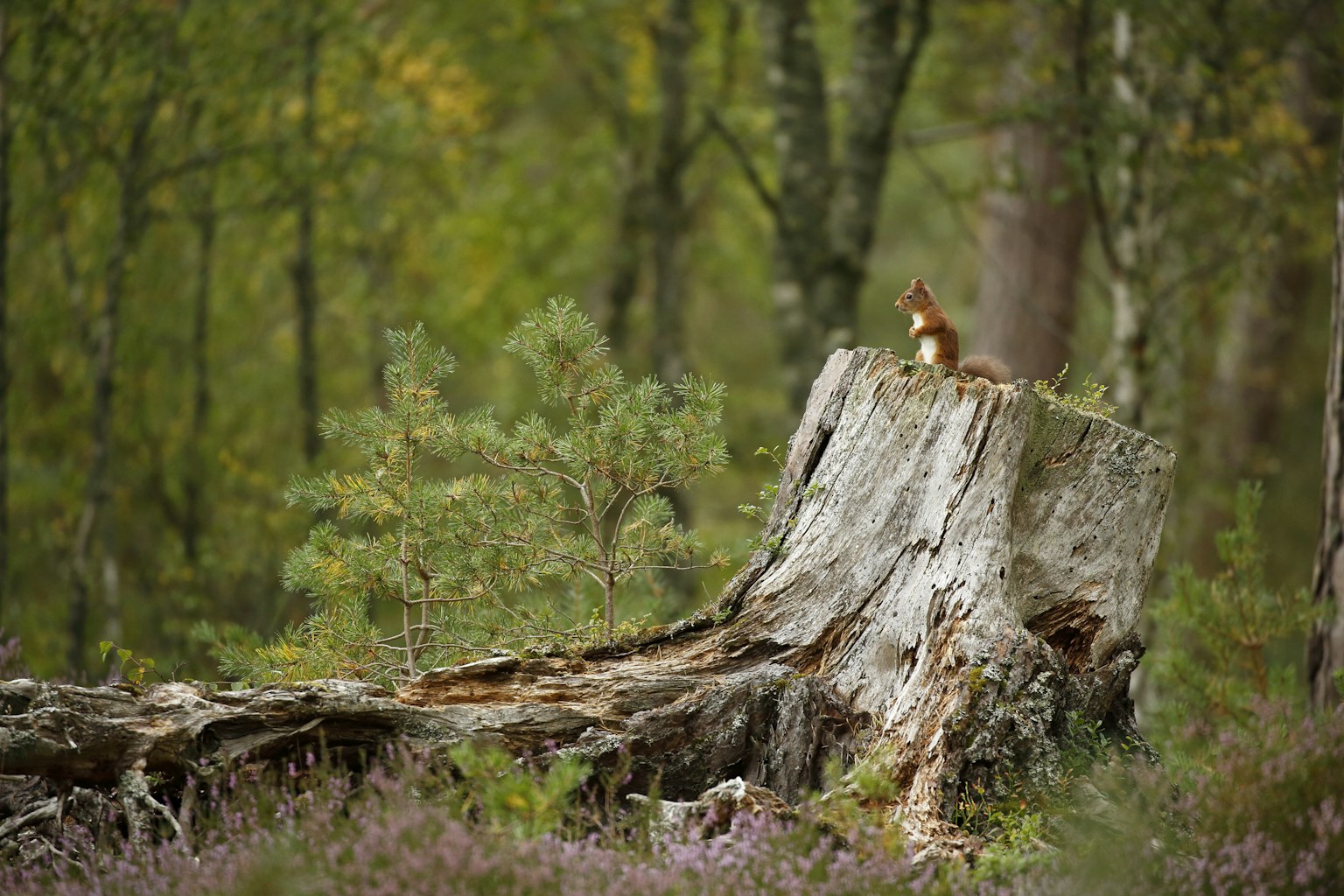
Rewilding Challenge Fund
The next round of the Rewilding Challenge Fund is now open until 11 October 2024, with decisions being made before the end of the year.
This £100,000 funding opportunity is awarded by Rewilding Britain to one large-scale rewilding project every year. It’s time to Think Big, Act Wild!
Explore our main Challenge Fund page to find out more about how to apply, and what sort of projects we’re looking for.
